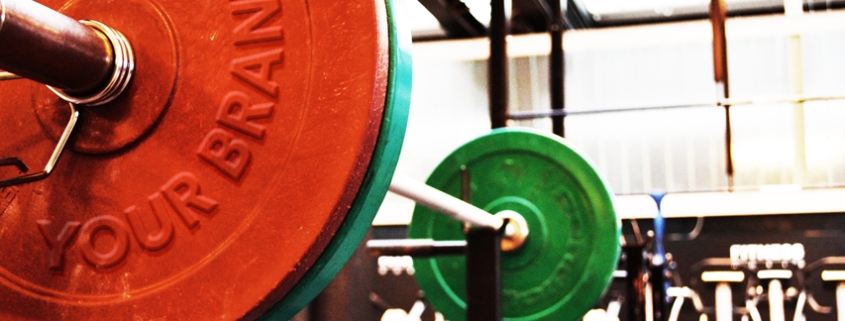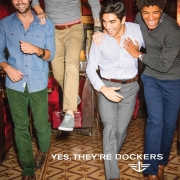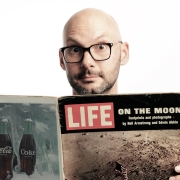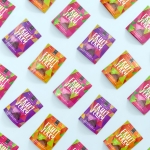Does Your Brand Even Lift, Bro?
How gym logic can translate into serious brand building
With the New Year quickly fading into memory (along with 99.9% of every resolution), it’s the perfect time to have a really honest talk about getting into shape. Full disclosure: I actually like talking about exercise… so yeah, I’m one of those people. However, since you’re reading this on The Accelerator and not gymsplosion.com, you can probably guess that this isn’t about your personal fitness goals, but rather about brand fitness.
Here’s the twist: the popular exercise techniques espoused by pretty much every fitness site (spoiler alert: they are all saying the same thing) can actually be repurposed to help get your brand into peak physical condition. And who doesn’t want that? So if you’re all warmed up, lets do this.
TECHNIQUE 1: USE FREE WEIGHTS
Your body (and brand) has more muscles than you realize—use them
If you go to the gym, chances are you look at the free weight area as the “hardcore” section where fitness lifers go to do fitness-lifer things that make you think they were all on the wrestling or football team in high school (or still are). That’s ridiculous.
Only about half were.
The other half are ordinary folks who learned that free weights do things that no machine can: they force your entire body to do more with each exercise, incorporating more muscles than you intended (the fancy term is “stabilizing muscles”). The result is more strength and muscle growth throughout your entire body, even if you don’t realize it.
So which of your brand’s stabilizing muscles could use some development? They might be hard to see. But if you worked them, what might happen?
Think about all the brands that developed their primary strengths only to realize that it was the peripheral work that held the secret to exponential growth. YouTube was originally a video dating service. Instagram started as a check-in app that incorporated gameplay from Mafia Wars(!). Starbucks used to just make high-end espresso machines.
If you took your brand away from the established norms of your business (the “exercise machines,” for the sake of this metaphor) such as distribution channels, delivery methods, or even occasion usage, how could your brand’s “stabilizing muscles” give you the strength to leverage new opportunities?
TECHNIQUE 2: MIX IT UP
The only way to avoid a plateau is to take a new path
In the fitness world, you hear lots of different terms that touch on the same concept of mixing things up: interval training, cross training, muscle confusion, pyramid sets, non-linear anaerobic redistribution (I made that last one up). The reason is that the human body is extremely adaptive. If you don’t keep throwing it fitness curveballs, you’ll plateau before you can ever justify wearing a thong at the beach. Trust me, I know.
The same holds true for your brand. If you keep attacking innovation in the same ways, time after time, your ideas will stagnate even if you don’t realize it. For instance, line extensions only matter if they build on your brand and bring in new customers rather than eroding existing sales. And it’s going to take more than a new package design to achieve long-term brand growth.
Instead of attacking innovation in the ways you know, confuse those brand muscles. Try a brainstorm smashup—in other words, smash a brainstorm into another activity—a grill out, on a road trip, or even on a group hike (which was a Steve Jobs’ staple). If you’re looking for more real-world innovation approaches, try a transactional learning model where you adapt the product on the fly to see what you learn. Or even just consider reevaluating your marketing plan to determine if traditional advertising is even needed. The secret to long-term success (aka, brand muscle building) is to frequently challenge your assumed paths to growth with new types of exercises. Just make sure you have a spotter. And speaking of spotters…
TECHNIQUE 3: USE A SPOTTER
Sometimes all it takes to lift more is knowing that someone has your back
Sounds easy, right? Use a spotter, lift a little more, get a little stronger. Piece of cake. Yet, if you go to the gym it might be the single most difficult thing to do. Asking for a spot plays on every insecurity a gym could elicit—that you’ll be judged for how much weight you’re lifting, that you’ll be interrupting someone else’s workout, that you’ll make a goofy face/noise when you lift, or that you will look like you don’t know what you’re doing.
But here’s the thing: every other person at the gym has had those same misgivings (yes, even those fitness-freaks who wear way too much Lulu Lemon/Rogue Fitness). Don’t think of asking for a spot as an inconvenience to them or insecurity for you. Think of it as a compliment. You’re telling them that they look like they know what they are doing. Also, the more in shape he/she is, the more gracious they will be to giving you a spot (if they are the 1% of gym-goers who won’t spot you, they are far more insecure than you, trust me).
Think about how often this applies to your brand. The purpose of a spotter isn’t to lift the heavy weight for you. It’s to help you lift it so your brand will get stronger. That kind of help could come in many forms—an all-day brainstorm session that yields a pipeline of ideas, a brand expanse exploratory to reveal whitespace opportunities, or even just a consultation on your current marketing/targeting/execution (the most classic brand “spot”). If you want a list of even more innovative ways to get a great brand spotter, try here. The key is to go all-in to get past your brand’s comfort zone—helping you discover what it can do and how far it could go. Also, it will give your brand a wicked six-pack. And who doesn’t want that?
So there you have it. Your brand lifting goals for the New Year. See you at the gym! Or at least at gymsplosion.
Jed Golden is a Senior Copy Director at Seed Strategy where he loves coming up with creative words just slightly more than dispensing workout advice. If you’re looking for either (or even if you just need a good spot), he’s ready to pump (clap!) you up.
Connect with us! Follow Seed Strategy on LinkedIn, Twitter, Facebook and Instagram.









![TMRE_Linked4[1] Picture of Cherri Prince and Lauren Selman plus the TMRE logo](https://seedstrategy.com/wp-content/uploads/2017/10/TMRE_Linked41-180x180.jpg)


